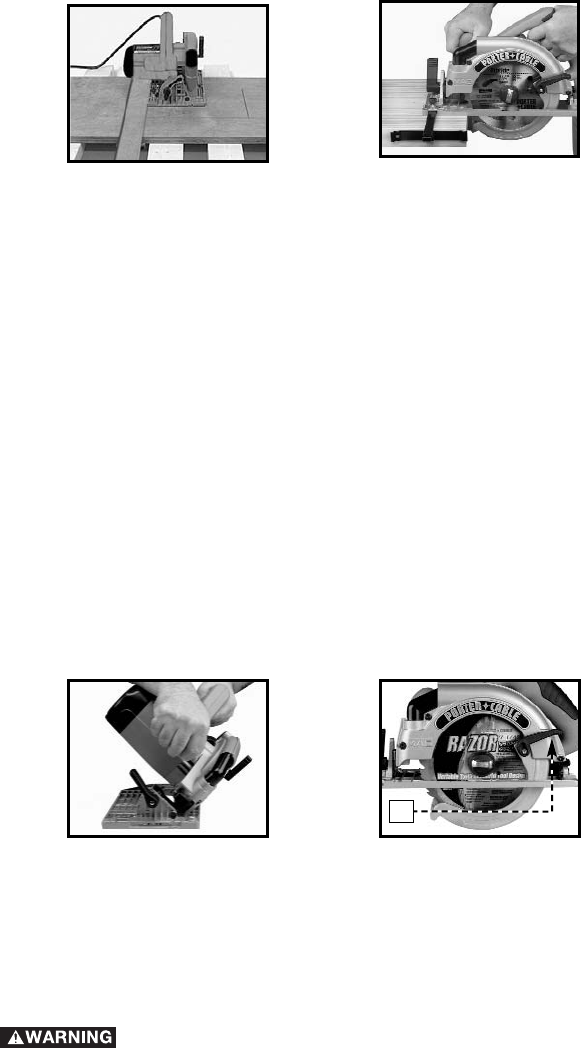
12
CROSS-CUTTING
Cutting directly across the grain of a piece of lumber is called crosscutting.
Position the work so that the cut will be on the left.
RIPPING
Cutting wood lengthwise is referred to as ripping. This operation is
performed in the same manner as crosscutting with the exception of
supporting the workpiece. If the workpiece is supported on a large table,
bench, or floor, place several pieces of scrap stock approximately one inch
thick beneath the workpiece to allow clearance for the portion of the saw
blade that extends through the material (Fig. 17). When using saw horses,
place 2 x 4’s lengthwise between the horses and the large sheets of
paneling or thin plywood to prevent the workpiece from sagging in the
center.
For narrow rip cuts, use the rip guide (available as an accessory). Guide the
saw by keeping the inner face of the rip guide (Fig. 18) tight against the edge
of the board.
For making wider cuts (plywood and wide sheets), tack or clamp a wooden
guide strip to guide the left edge of the saw base (Fig. 17).
NOTE: Adjust the depth of cut to allow for the thickness of the wooden
guide strip.
BEVEL CUTTING
Bevel cuts are made in the same manner as crosscuts and rip cuts. The
difference is that the blade is set at an angle between 0° and 45°(Fig. 19).
The bevel cut made at an angle to the edge of a board is called a compound
cut. Certain compound cuts may require you to manually retract the
telescoping guard to allow the blade to enter into and/or through the cut.
Use the lever (A) Fig. 20 provided on the telescoping guard
when you have to retract the telescoping guard manually.
Fig. 20
Fig.17
Fig. 18
Fig. 19
A

















